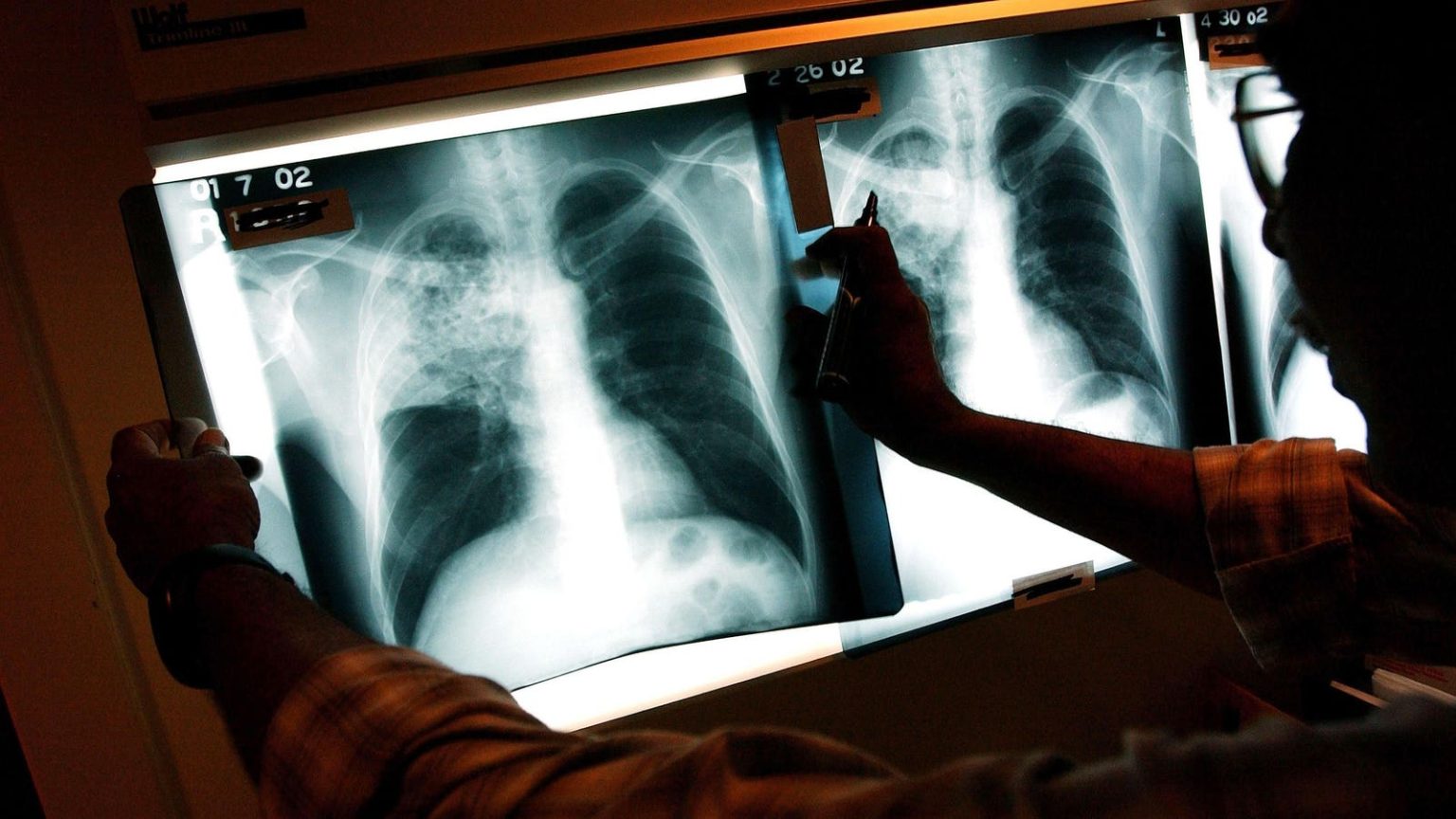Topline
Efforts to combat tuberculosis are bouncing back from disruption caused by the Covid-19 pandemic, but the ancient disease remains one of humanity’s biggest killers and antibiotic resistant strains are a looming “public health crisis,” the World Health Organization said on Tuesday, urging politicians to follow through on commitments and consign TB to history books.
Key Facts
Approximately 1.3 million died from TB—a bacterial infection that often attacks the lungs—last year, the WHO said in its annual report on the disease, down from estimates of 1.4 million in 2020 and 2021 and almost back to the level of 2019.
The figure makes tuberculosis one of humanity’s biggest killers—a position it has occupied for much of human history—and in 2022 it was the second leading cause of death from a single infectious agent after Covid-19 and caused almost twice as many deaths as HIV/AIDS.
While global TB deaths have fallen by nearly one-fifth since 2015, the WHO said this is a far cry from the 75% reduction by 2025 it set out in its End TB Strategy.
Some 7.5 million people were newly diagnosed with TB in 2022, the WHO said, the highest figure on record since the organization began global monitoring for the disease nearly 30 years ago.
The WHO said the record number is likely from a “sizeable backlog” of people who developed TB in previous years but faced delays in getting treated and diagnosed due to disruption from the Covid-19 pandemic, which the organization estimates was responsible for an additional 500,000 excess deaths from the disease over the last three years.
What We Don’t Know
The WHO acknowledges there is a notable gap between the number of people who are newly diagnosed with TB and the actual numbers developing TB. Such gaps mean the disease can keep spreading in communities and leaves people without treatment (the WHO said only two in five people who need it get treatment for TB). This gap narrowed to a best estimate of 3.1 million people in 2022, the WHO said, down from around 4 million for the two years prior and at around the same level before the Covid-19 pandemic in 2019. This means an estimated 10.6 million people developed TB in 2022, the report said, up from estimates of 10.3 million and 10 million in 2021 and 2020, respectively. The vast majority of new cases—nearly 90%—were in thirty countries. Of these, the report said eight—India (27%), Indonesia (10%), China (7.1%), the Philippines (7%), Pakistan (5.7%), Nigeria (4.5%), Bangladesh (3.6%) and the Democratic Republic of the Congo (3%)—accounted for more than two-thirds of the global total.
Tangent
Antibiotic resistant TB is a “public health crisis,” the WHO said, with an estimated 410,000 people developing multidrug-resistant TB or TB resistant to first line treatment rifampicin in 2022. Only around two in five of people with this were able to access treatment, and levels of diagnosis and treatment for this kind of TB are still below pre-pandemic levels from 2019, the report said. The success rate for treating drug-resistant TB was 63% globally in 2022, the WHO said.
Big Number
75 million. That’s how many lives have been saved since 2000 due to global efforts to fight TB, the WHO said. This is despite large funding gaps between what is needed and available for TB efforts. For example, the WHO said $13 billion is needed for diagnosis and care in 2023 on the back of just $5.8 billion last year. There is also a $1 billion funding gap for research into TB, the report said.
Crucial Quote
“For millennia, our ancestors suffered and died with tuberculosis, without knowing what it was, what caused it, or how to stop it,” said WHO chief Tedros Adhanom Ghebreyesus. “Today, we have knowledge and tools they could only have dreamed of. We have political commitment, and we have an opportunity that no generation in the history of humanity has had: the opportunity to write the final chapter in the story of TB.”
What To Watch For
The WHO urged countries to enact targets made earlier this year at the UN General Assembly High-Level Meeting on TB, which included reaching 90% of people in need with prevention and care services by 2027, as well as closing funding gaps and ensuring the availability of at least one new vaccine (the existing BCG vaccine—the only one approved for TB—is one of the oldest and most widely used vaccines in existence but there is room for significant improvement). The WHO said progress towards new vaccines, treatments and tests for TB is “constrained” by funding but that there are a number of products in the pipeline. The WHO said it endorsed three new skin tests in 2022 and this year developed a guideline group to assess next-generation tests for drug resistant infections. As of September, the WHO said there were 16 vaccines undergoing clinical trials, four of which are in late stage Phase 3 trials, as well as 28 drugs undergoing clinical trials and at least 29 clinical trials evaluating models of drug delivery and treatment regimens.
Novavax Partners With Gates Foundation Offshoot In Efforts To Develop Malaria And TB Shots (Forbes)
Breakthrough For Tuberculosis—One Of The World’s Biggest Killers—As New Vaccine Shows Promise In Early Trials (Forbes)
Read the full article here





